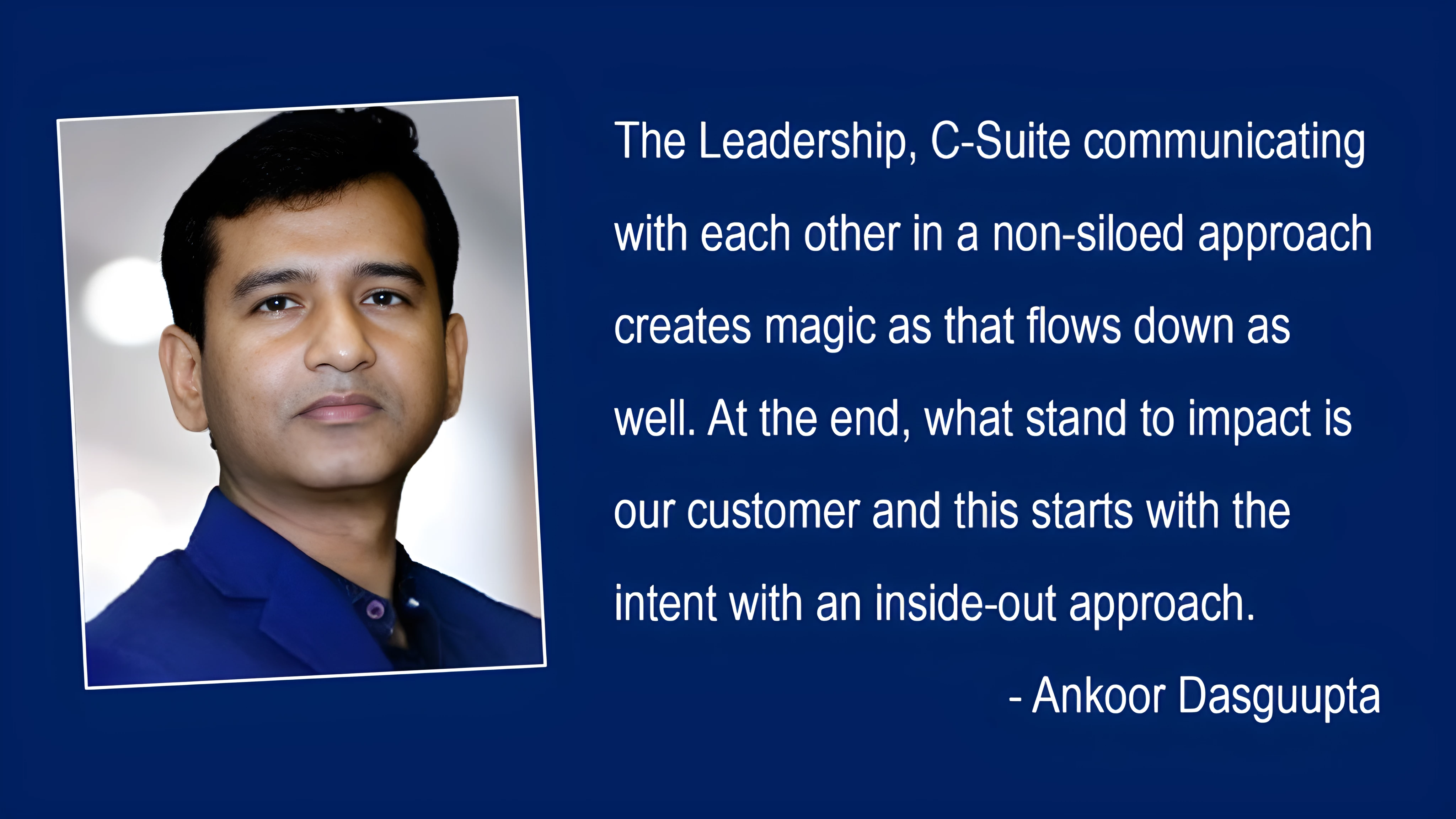During my career journey, I have observed that there are certain aspects that have a strong potential of slowing us down, as people and as businesses. The thing that I am talking about is operating in silos which needs conscious and unbiased action to bring relevant stakeholders together for arriving at a decision. When I see ‘stakeholder management’ as an ask in some of the senior level job description, it makes me think, actually as to ‘why’ is the need? This needs to be a top-down approach and also to optimise the communication flow in terms of stimulus to effective response. The Leadership, C-Suite communicating with each other in a non-siloed approach creates magic as that flows down as well. At the end, what stands to impact is our customer and this starts with the intent with an inside-out approach. It also becomes easier to learn from other functions – their challenges and best practices.
Commercial and real estate provider Jones Lang LaSalle (JLL), under serious price competition, made a strategic shift in 2001, when its customers began demanding integrated real estate services. For instance, corporate customers wanted the same people found or built property for them to manage it. In response, JLL adopted a solutions-oriented structure that helped attract numerous highly profitable new accounts.
For other companies such a Best Buy, GE Healthcare as well as JLL, the journey to understand and unite around customer needs was a multiyear endeavour with major challenges and setbacks along the way. The effort required systematic, ongoing change to help organisations transcend existing product-based or geographic silos and in some cases replace them with customer-oriented ones.
Citing a relevant example from a write up that I read in HBR, Cisco Systems took a similar, layered approach to customer focus but with a twist. The company, which had been organised by customer segment from 1997 to 2001, reverted to a technology-focussed structure after the internet bubble burst, forcing the company to address costly redundancies. Under its previous structure, Cisco had been creating the same or similar products for different customer segments whose needs often overlapped. In fact, in some cases each line of business offered its own technology or solution for the same problem. However, leaders feared that organising around technologies which involved centralising marketing and R&D would distance Cisco from customers’ requirements. The answer was to retain the company’s three sales groups based on customer type and establish a central marketing organisation -at the intersection of technology groups and the customer-facing sales units which was responsible for facilitating the integration of products and technologies. The marketing group also established a cross-silo solutions engineering team to bring disparate technologies together in a lab, test them and create blueprints for the end user solutions In addition to those structural measures, Cisco implemented several customer-focussed processes, such as a Customer Champion Program which assigned senior executives as advocates for key customers.
Having said that while bridging mechanisms such as cross-silo teams and processes can be very effective, they may not be that easy to implement.
Here are four sets of activities that organisations can look at for a non-siloed approach. The Four Cs –
Cooperation – Encouraging people in all parts of the company through cultural means, incentives and the allocation of power to work together in the interest of customer needs.
Capability development -Ensuring that enough people in the organisation have the skills to deliver customer-focussed solutions while defining a clear path for employees with those skills.
Coordination – Establishing structural mechanisms and processes that allow employees to improve their focus on the customer by harmonising information and activities across units.
Connection – Developing and nurturing relationships with both – internal and external partners to increase the value of the solutions cost-effectively. I’d lay more emphasis on nurturing because this thing in specific has the potential to retain and build more sustainable businesses.
One of the first lessons that I learnt at GE was the six-sigma methodology and being part of a Greem Belt project. My perspective is, the role of all senior leaders is cross-functional (at least that is how I believe it must be), and if key stakeholders (functional heads) follow a simple method of Define, Measure Analyze, Improve, Control (DMAIC) , then at least the direction is well defined to stay on course and that also can help in building a non-siloed mindset. At the end of this piece, I reiterate that the busting of silos within an organization will positively impact the customer and of course help in strengthening the culture.
First published on: https://reputationtoday.in/the-busting-of-silos/


